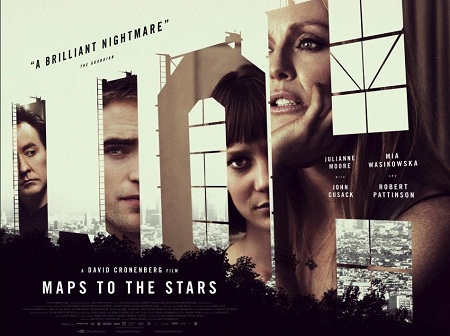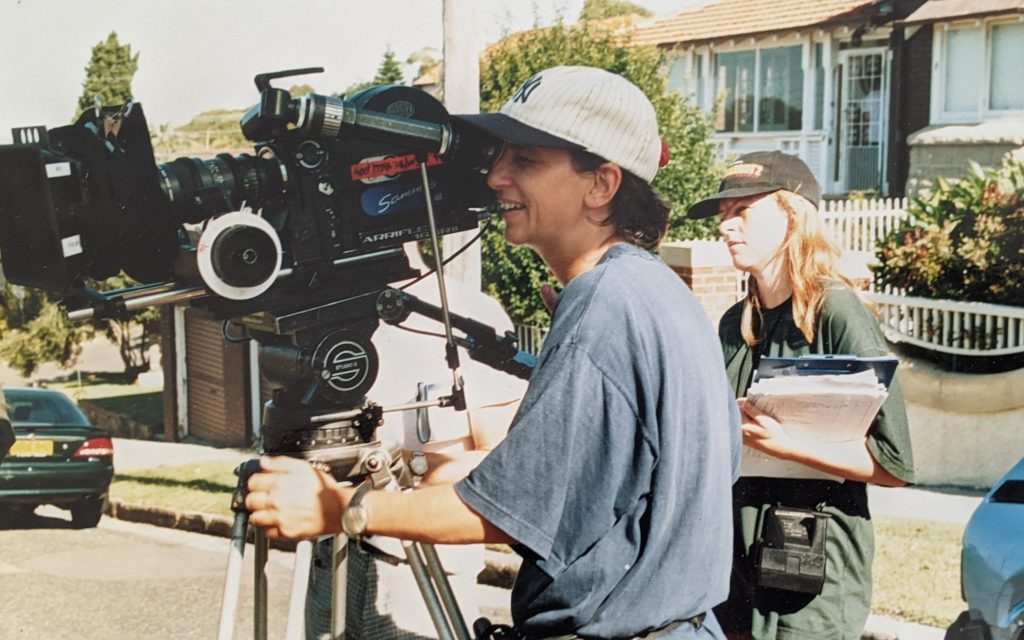Canberra International Film Festival’s coming of age
The foyer outside the cinema is crowded and the air is filled with the smell of popcorn. You walk into the dimly-lit cinema to find your seat, in front of a towering screen. Other patrons are chatting away before the main event. Some are wondering if it will live up to the hype or if it will be good at all and others are just excited to be there. The lights go down; the crowd goes silent and the screen lights up.
Back for its 18th year, it’s the Canberra International Film Festival (CIFF).
The festival has come a long way since it began at the University of Canberra in 1996 to now at Dendy Cinema. It has slowly grown and expanded over the years and this year is the festival’s biggest, with 65 new films from 29 different countries and 120 screenings. Audience attendance is also expected to rise over 17,000.
Returning for his second year as CIFF’s artistic director, Lex Lindsay said he was lucky to be able to continue to curate the festival at a time where the audience base was building.
“Over the past five years we’ve seen an exponential growth in the audience of the Canberra International Film Festival. It really is a film festival that is now finally coming into its own and growing in size and growing in reputation,” he said.
This year’s CIFF has expanded to 18 days from last year’s 12 and will be under one roof across three screens at Dendy and this was due to audience demand.
“We consulted with our audience and a massive 92% said they would see more films if they could,” Lindsay says.
“It wasn’t financial constraints that was stopping them, it was time constraints. The festival was its own worse competition; we were competing with [our own] time, or life commitments over that two week period.”
There are three themes running throughout this year’s CIFF program which are: ‘war, hope and denial’; which looks into the way we interpret war and conflict, ‘man, woman and child’; where gender issues of roles and expectations are explored and ‘then, now, next’; which takes a look at the past, present and future.
Lindsay said that this year’s festival is to be more fun oriented in comparison to last years’ after audience feedback calling for more.
“Last year there were really strong films but they were quite serious in nature so the challenge with CIFF was to find comedy and to find really interesting and unique comedy which is much harder than it sounds,” Lindsay says.
“Film festivals tend to be populated with very serious cinema, so I’ve hunted down some very obscure comedies from Eastern Europe for example, which is going to bring a different flavour to the festival this year.”
Lindsay also said that this growth has given him the opportunity to find films which CIFF may not have been able to get before and unique films just for Canberra audiences.
“There’s a certain component of the festival that needs to be about award-winning cinema, you know the best of the best of the past year featured in the all of the major film markets around the world.”

This year’s CIFF will also have the most Australian movie premiere for the festival with 21 films, including the opening night film, Maps to the Stars and the centrepiece film, The Dead Lands.
The festival was founded at the University of Canberra in 1996 by the artistic director of the time, Michael Sergi, and had its opening night screening of The Horseman on the Roof at the, now closed, Electric Shadows Cinema.
Up until 2001 the festival was at the university, it was relativity small, didn’t have much marketing and wasn’t making a profit. In 2002 it was decided that the festival should be moved off site and it was Graham O’Loghlin, who was working as a consultant at the University at the time and was the festival’s president for six years, who helped make it happen.
Now a lifetime member, O’Loghlin helped the festival’s transition by setting up the committee of the Canberra International Film Festival Incorporated, hired BDW Event management to manage the festival and secured funding and sponsorship from the ACT Government and other external sponsors.
“It’s really grown, it’s grown enormously, it’s a great success story,” he said.
As for the future and further expansion of the festival, O’Loghlin said he’d like to see more support of local film makers, the continuation of building a community partnership with the University of Canberra and possibly have a big prize competition.
“I can’t say I’d like to see greater range of films because I think they have a great range of films now. I would like to see a closer linkage with local film makers, because I think that was one of the original intentions. I’d like to see the University of Canberra remain involved with it because I think the linkage with the courses [related to the festival] is quite valuable and the University deserves the credit for having started it and I think they get a lot of kudos for remaining involved with it,” he said.
Lauren Black, the sponsorship officer for the University of Canberra, said as a founding partner the University has continued to sponsor the festival because they are able to form new partnerships to give students more opportunities to get experience.
“Because we founded the festival we wanted to see it continue and prosper,” she says.
“Financially we do support it to continue, but also it’s really good opportunity for students in our Faculty of Arts and Design to get experience. They’ve [CIFF] been a great partner for the University for the last 18 years in that way.”
“We can involve students to get experience on an events level, to be engaged with the CIFF conversations, they get to do interviews they can also be involved in the event management, organising ticketing or volunteering on the day. There are a lot of opportunities for students to get real life experience.”
Lucia Hill, content director at ABC 666 Canberra, has attended the festival for two years and this year will be her third.
“Initially the first year I didn’t know what to expect, I wasn’t sure how international the film festival was going to be,” she says.
“I think too often with film, and certainly in my experience with film, you’re generally only exposed to the blockbusters and American films and maybe some British film. But I think the diversity of film that being shown at the film festival is great. The first year I questioned some of the choices that were offered but I think last year there were some marvellous films that I went to.”
Since its humble beginnings at the University of Canberra, the film festival has come of age in its eighteenth year, with the support from the general public and sponsors, the future festival no doubt will continue to expand.
The Canberra International Film Festival is on from October 23 to November 9 and for more information visit their website.
Text, images and video by Vanessa Lam.



Be the first to comment!